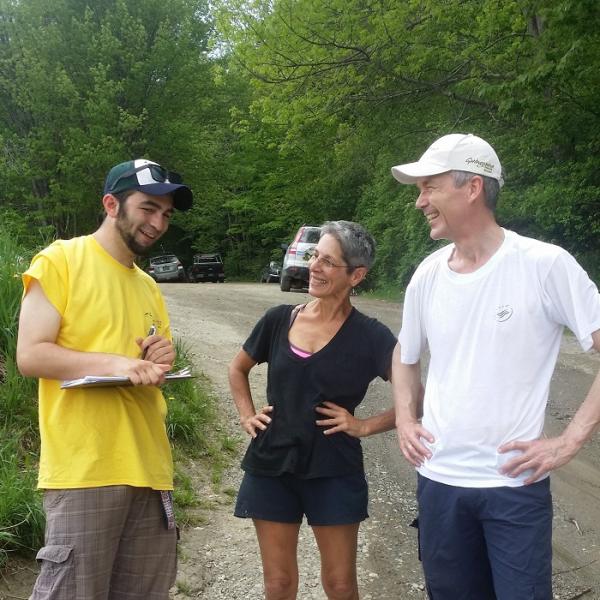
Visitors to Waterbury Reservoir may have encountered something new at the lake this year: a nice young man with a yellow “Public Access Greeter” shirt on. This summer was the inaugural year for a Public Access Greeter Program at Waterbury Reservoir (FWR), which was established by Friends of Waterbury Reservoir with assistance from the Vermont Department of Environmental Conservation’s aquatic nuisance species grant-in-aid program. A part-time greeter, along with a motivated group of volunteers from FWR, offered invasive species education and boat inspections at multiple launch sites around this aquatic gem in central Vermont.
The 860-acre reservoir receives over 60,000 combined visitors to the state parks on the shores of the lake, as well as three public access sites. This year, the greeter and volunteers focused their efforts on the heavily used Blush Hill boat access area. They kept a keen eye out for watercraft and trailers that might be bearing Eurasian watermilfoil, which is not present in the reservoir. Another goal was to contain the spread of brittle naiad, an easily spread invasive plant currently found in portions of the reservoir but rare in other Vermont waterbodies.
During the course of the summer, the greeter and FWR volunteers had over 400 individual interactions with boaters. In three instances, boats were intercepted before leaving the reservoir with live plants attached, and in two of those instances, the species in question were invasive. Luckily, no plant material was found on boats or trailers launching into the reservoir, but there were four occasions when excessive water was drained from boats coming from other lakes. Small-bodied invasive organisms, such as spiny waterfleas and juvenile zebra mussels, can be transported in very small amounts of water, so ensuring boats enter the lake drained of water is a primary concern of any public access greeter program.
According to FWR, the inaugural year of the program was highly successful. Zach Johnston, the part-time greeter, did a great job engaging people in conversations and answering questions about the program. FWR noted that they were happily surprised by how interested and appreciative folks were that a greeter was present at the reservoir, and that many had further questions about invasive species in general and were interested in the printed material handed out.
Some encouraging words from Chuck Kletecka and Laurie Smith, who administered the program for FWR:
“Overall, the program went really well for our first year. Although we did not have many interceptions, we were able to educate many people and introduce them to the dangers of invasive species introductions. One common thread between all the people we interacted with was the love of Waterbury Reservoir. We hope this summer was just the start of future efforts by the State and FWR to share the “love” and keep our beloved reservoir the beautiful resource it is for years to come.”